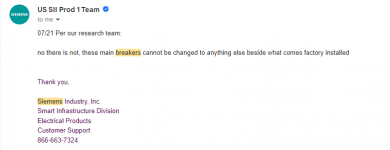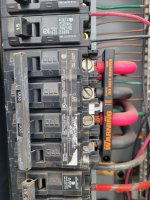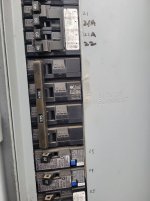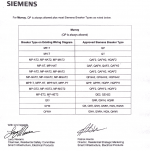SKSolar
Member
- Location
- Los Angeles
- Occupation
- Engineer
Does anyone ever de-rated a Murray MSP 200A breaker to make room for a higher than 40A backfed solar breaker?
By NEC 120% rule, a 200A MSP with a 200A main breaker limits the backfed breaker to 40A. The general rule is to de-rate the main breaker to increase the amperage of the backfed breaker.
I have a Murray JA244B1200SEC MSP with a 200A main breaker. I asked Siemens and this is what they said:


I don't really agree with this argument/comment. Any thoughts?
By NEC 120% rule, a 200A MSP with a 200A main breaker limits the backfed breaker to 40A. The general rule is to de-rate the main breaker to increase the amperage of the backfed breaker.
I have a Murray JA244B1200SEC MSP with a 200A main breaker. I asked Siemens and this is what they said:


I don't really agree with this argument/comment. Any thoughts?




